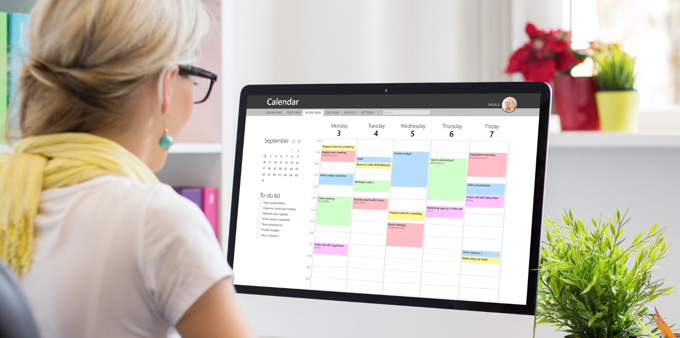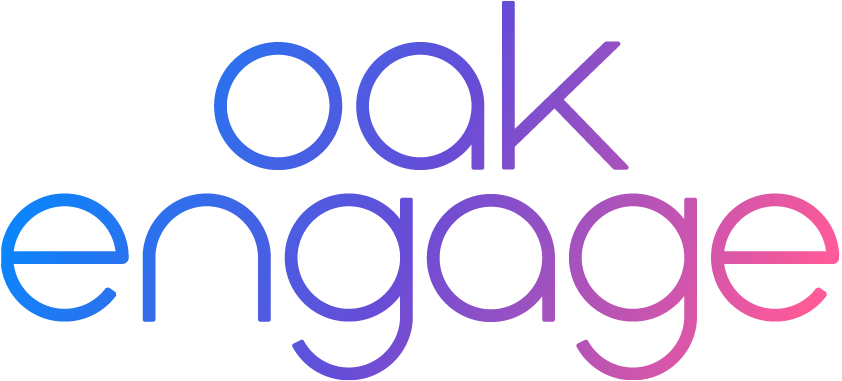Don’t you love the feeling of powering through your to do list as the hours go by, the dopamine rush of crossing off your tasks. When we’re productive we feel satisfied, motivated and most importantly engaged. So the question begs, how can we ensure our employees are engaged and working to the best of their ability?
In this blog post we’ll be going through a range of employee productivity statistics that shows the state of productivity in the workplace today and how you can empower your employees to be their best productive selves. Remember… Productivity is about the quality of work, not quantity and your most productive employees will be those who have a good work life balance and are happy and healthy.

As hybrid working has become the norm for many businesses and more of the workforce are now working from home than ever before, have we managed to adapt to these new ways of working. Research suggests so! The CIPD found that the increase in home working has boosted workers productivity. This was especially true for organisations that offered training in managing remote workers. When done correctly, hybrid working can give your employees the benefit of a better work life balance, making them less prone to burnout.
83% of workers believe that they don’t have to work in an office to be more productive
As we come to embrace remote working, are the days of the traditional office space over? A whopping 83% of workers believe that they don’t need to be in the office to be productive. Remote work is becoming a priority for many job seekers. But why? Less interruption from colleagues means more time to get into deep work.
Flexjobs found that over half of workers feel more productive when working from home and workers would even take a pay cut for the privilege of working from home. Other popular places to work outside of the home are cafes, museums, libraries and outdoor spaces.
The average employee is only productive for… 2 hours and 53 minutes per day
UK based company Voucher Cloud published results from their latest survey looking into the productivity of workers across the UK and the results are quite surprising… The average worker is only productive for 2 hours and 53 minutes of the working day.
Only a fifth of workers believed that they were productive throughout the day with a top ten list of distractions revealed… here are the top four:
- Checking social media
- Reading news websites
- Discussing out of work activities with colleagues
- Making hot drinks
Considering we work for 8 hours a day the fact that workers are productive for less than half this time is intriguing! In fact, research suggests that an eight hour workday is outdated and ineffective as the hours we work doesn’t equal productivity. In fact, it’s how we structure our workday that matters and that includes taking regular, real rest breaks. So rather than endless scrolling, take yourself away from your computer, go for a walk, stretch or read a book. Use your breaks wisely!
Multitasking can hurt your productivity by 40%
You might think multitasking is the best way to approach things right? Get as much done as you possibly can? Wrong. Multitasking might seem efficient at first but the mental blocks and interruption created by shifting tasks can cost up to 40% of someone's time and productivity. Make life easier and tackle your to do list task by task, and in order of priority!
Scandinavian countries make up three out of the top six most productive countries
Scandinavians are winning at life, and work. Dominating the World Happiness Reports and ranking amongst the most productive countries in the world. What’s the secret to these countries' success? There are a few things:
Shorter Work Days and Weeks: In Sweden some employers switched to six hour workdays, giving citizens an amazing work life balance. Studies found that nurses took fewer sick days and had more energy to bring to work. Time is used efficiently and effectively.
Remote & Flexible Work: In the 90s Finland’s Working Hours Law allowed workers to adjust start and end times of their shifts by up to three hours to fit their lifestyles. In 2020 the act was updated and means employees can determine the time and location of their work for at least half of their normal working hours.
Meaningful Breaks: In Scandinavian countries they make use of their work breaks. No sitting and scrolling. They have ‘Fika’ which translates to coffee break. Once or twice a day workers will properly step away from their work to sip coffee, have a snack and socialise with colleagues or others. Why does this work? The human brain can’t stay focused constantly, it works in blocks and regular breaks help to fuel us for these blocks of work. So why not ‘Fika’ with your colleagues…

Replacing work with exercise can increase productivity
Sit less, move more. Studies show that sitting at your desk all day is linked to low productivity and a decrease in our mental wellbeing. On the opposite end of the spectrum, exercising regularly boosts our health and wellbeing and brings a whole host of benefits. Giving your employees flexibility with when they exercise and how they choose to exercise will have a huge impact on productivity levels.
Exercise improves our attention span, our memories and improves how our brains process information… Basically it makes us more productive. Not only that but it raises our energy levels, lowers stress and improves our general wellbeing making us efficient and energised.
Proper nutrition can increase productivity by 25%
What goes hand in hand with exercise? A balanced diet. And a balanced diet goes hand in hand with productivity, boosting employee productivity levels up to 25%. So what can we put into our bodies that is going to fuel our minds. It’s about what we eat and when we eat it.
Our brains work best when we have 25 grams of glucose circulating in our blood stream. So a banana, this is a great snack. Eat foods that will invite good energy into your body such as fruits and vegetables, whole grains and healthier fats and proteins. Eggs, yoghurt, blueberries, dark leafy greens, avocados, whole wheat bread, salmon, rice and broccoli are all good choices.
38% of remote employees feel exhausted after daily virtual meetings
Only hold meetings if they’re essential or your employees will be at risk of zoom fatigue. Studies show that 38% of employees who have a full week of virtual meetings feel exhausted whilst 30% feel stressed. Only have meetings when really necessary and make sure you schedule one to one meetings with your employees to check in on them.

This will give your employees their time back to be productive and a one on one check-in allows them to bring up any issues they might be dealing with.
85% of employees are most motivated when Internal Communications are effective
How can you motivate your employees if you’re not communicating with them properly? Trade Press Services found that 85% of employees become more engaged in the workplace when communications are effective.
Make the most of your communication channels. Send out employee newsletters, create company video updates and post them on your intranet timeline, post about company news and milestones, celebrate other employees. By making a song and dance of what’s going on company wide, within teams and what people within the organisation are up to the more motivated and connected your employees will be.
71% of people are much more productive whilst listening to music
Do you listen to music when you’re working? Studies show that 80% of workers listen to music for enjoyment whilst working and 71% who do so are more productive when listening to music with pop, rock and country being the best fuel for productivity.

But how? Music immerses you in your work and for people doing repetitive tasks are happier and more efficient when listening to music as you can easily get in the zone. Music is also a good way to block out any distractions and focus more, it helps us to relax more. Some people find that they’re more creative when they listen to music, so if you’re researching and brainstorming it could be a source of inspiration!
So what are you waiting for, get curating your work playlists!
42% of people said that having the ability to access information quickly and easily has an impact on how productive they are
Remote work is most definitely here to stay but with that comes the extra challenge of keeping communication and workflow at its peak. 42% of remote workers have said that the ability to access information quickly and easily has the greatest impact on how productive they are.
Having a dedicated digital and adaptive workspace like Oak means your employees can access whatever they need, wherever they need. No trawling through emails, messages and endless scrolling, it’s so easy to search for what you need with the search bar or document management tool or to head to the dedicated space for the things you're looking for.
Give your employees a say in major decisions
Have you thought about including your workforce in major decisions? It could have a huge boost on productivity levels. When employees are given a voice in company decisions they will feel valued and that their perspective matters, resulting in higher productivity rates.
When people feel like they have contributed and made a difference they’re more likely to work hard in making that suggestion a reality and there is a big motivator to succeed. Try bringing your employees into your next big meeting and see what weird and wonderful contributions you might get…
Conclusion
It’s clear to see from these statistics that giving workers the flexibility to choose how, when and where they do their work is the key to productivity. By giving your workers flexibility to take ownership of their role and their tasks you’ll empower them to be productive and thrive in their role.


